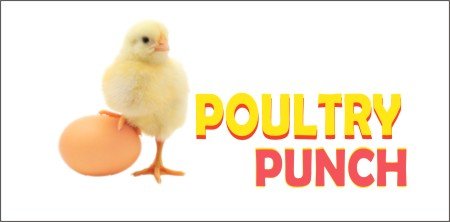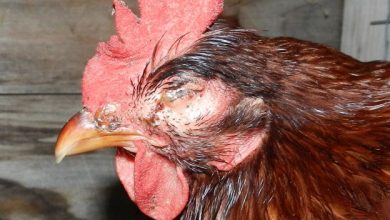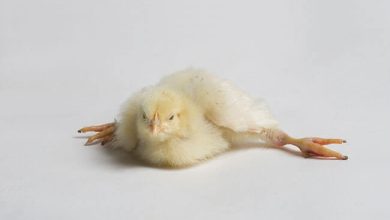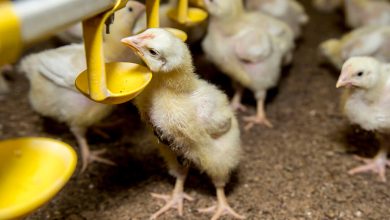Biosecurity Measures for control of Highly Pathogenic Avian Influenza in Poultry

Prof. R.N.Sreenivas Gowda
Founder and former Vice Chancellor, Karnataka Veterinary, Animal and Fisheries Sciences University, Bidar
‘Covid -19’ baffling the entire world, and at the same time there are outbreaks of ‘Bird Flu’(H5N1), ‘Swine Flu’ and ‘Acute Encephalitis Syndrome’(AES) in many parts of our country. A bad news knocking the hope in health care of both human and animals. We are not prepared for such unforeseen circumstances except some amount of preparedness to contain bird flu after its earlier out breaks. Now Govt is imposed lockdown and asking to maintain distance. Adoption of sanitary measures to clean the roads and spraying disinfectants as a part of biosecurity in several cities of our country. We have forgotten the old adage “prevention is better than cure”. Therefore practicing biosecurity measures is certainly prevent entry of infections and kill the already entered germs.
In recent past we are facing several outbreaks of Avian influenza in many states of our country and massive culling of flocks is also ongoing to contain the disease. The Veterinarians are on their toes to limit the disease. The present article is to give some details of the disease, its spread and adoption of biosecurity programmes to contain and prevent the disease.
Avian influenza (AI), perhaps the most severe viral disease of the 21st century, has been proved to be of poultry origin. Avian influenza or “bird flu,” is a contagious disease that can infect all types of birds. The disease is caused by the virus H5N1. In 1933, scientists discovered that AI viruses caused disease syndromes that ranged from mild to severe signs in domestic poultry; they also related the poultry influenza to human flu.
AI is caused by type A strains of the influenza virus family Orthomyxoviridae. A total of 15 subtypes of influenza virus have been identified. AI viruses are pleomorphic and have eight segments of single-stranded, negative-sense RNA that code for 10 proteins. These proteins include two surface glycoproteins, the hemagglutinin (HA) and neuraminidase (NA), and internal proteins such as the matrix (M) and nucleoproteins (NP). Serologic reaction in the agar gel immune diffusion (AGID) test to the M and NP is the basis for speciation or classification of all AI viruses as type A influenza viruses (influenza A viruses). Furthermore, serologic reaction to the HA and NA are the basis for subtyping into 15 HA (H1-15) and 9 NA (N1-9) subtypes, respectively. The avian influenza viruses are grouped into two broad Pathotype based on virulence in chickens: (1) viruses of low virulence, that is, low-pathogenicity AI (LPAI); and (2) viruses of high virulence, that is, high-pathogenicity AI (HPAI). LPAI is a less severe disease of poultry and is under the control but the H7 LPAI viruses have exhibited the ability to mutate from LP to HP after circulation in domestic poultry.
All highly pathogenic outbreaks have been caused by influenza A viruses subtypes H5 and H7. Influenza strain H5N1 has been transmitted from poultry to humans. The first human victims of the AI virus were recorded in Hong Kong in 1997. Disease in poultry and humans caused by H5N1 HPAI has now been present for over a decade. It has involved commercial flocks of all sizes and species as well as scavenging poultry (also often called backyard poultry).
We need to understand the epidemiology of its spread and it is now clear from epidemiological analysis and molecular biology studies that while wild birds play a role in the spread of disease, they are responsible for a relatively small proportion of the overall volume of disease transmission worldwide. Currently the majority of infections have been detected in dead wild birds in many parts of our country. The majority of cases are due to local spread between domestic poultry and wild fauna.
Ecology and Epidemiology
Avian influenza viruses exist in five discrete ecosystems. The reservoir for genes of all type A influenza viruses circulate in wild bird populations, principally waterfowl (Order: Anseriformes) and shorebirds (Order: Charadriiformes), but to a lesser frequency in other wild birds, especially in aquatic habitats. The virus appears to be well adapted to these species, causing only an asymptomatic enteric infection with large amounts of virus being shed into the environment. For ducks, such as mallard ducks, the highest incidence of infection is usually in the fall, when large numbers of young ducks congregate before flying south for the winter. The incidence of infection typically drops to low levels in the winter months, but virus can often be isolated all year long. The wild bird population therefore remains a reservoir source of virus that cannot be practically controlled. Most AI viruses isolated from wild birds are low pathogenicity (LPAI), but a few have been Highly Pathogenic (HPAI), especially when isolated from wild birds trapped on poultry farms affected with HPAI.
How AI Spreads ?
Wild waterfowl are considered the natural reservoir of all avian influenza A viruses. Most infected birds exhibit no symptoms, even when they are excreting large quantities of infectious virus. These asymptomatic birds act as “silent” reservoirs of the virus, perpetuating its transmission to other birds. Domestic waterfowl (e.g., ducks) may also act as a two-way intermediary in the transmission pathway of avian influenza between wild waterfowl and domestic terrestrial poultry. Although usually transmitted from wild birds as a virus of low pathogenicity, it may mutate during replication in domestic poultry and highly pathogenic avian influenza (HPAI) strains may arise.
Survival Period of the AI Virus HPAI
Viruses can survive for long periods at low temperatures. Birds infected with avian influenza virus shed large quantities of virus in their faeces as well as in their saliva and nasal secretions. It is likely that infected droppings or other secretions from both symptomatic and asymptomatic migratory waterfowl will enter water environments where the birds gather. AI virus survive only up to 24 and 18 h at 37 and 42 °C, respectively and up to 5 days and at 24 °C in both wet and dry faecal matter.
AI spreads quickly through bird-to-bird contact. AI virus can travel on manure, egg flats, crates, other farming materials or equipment, and people who have picked up the virus on their clothing, shoes, or hands. Migratory waterfowl can also carry the disease. Wild water birds are the natural reservoir of avian influenza viruses. Infected birds spread the virus through their faeces and nasal and eye discharges.
Further the spread is largely human-mediated. People create spread directly by moving live birds especially broilers, and culled birds in uncleaned cages from one state to another. indirectly through these contaminated materials (fomites), The live-bird markets (LBMs) are also have been one of the important elements in maintaining and spreading the virus, and have been the source of infection in humans.
Risk Factors for Introduction of Influenza Virus A into Poultry
There are several recognized risk factors for the introduction of influenza A viruses into domestic poultry.
1. The first is direct access of poultry to wild birds infected with AI viruses, especially wild ducks. Outbreaks of multiple subtypes of avian influenza occurred routinely when infected ducks had the opportunity to commingle with Poultry. Once the virus was introduced onto a poultry farm, the virus could become adapted to poultry and spread to other nearby poultry farms by the movement of infected birds and contaminated materials. Frequent outbreaks in Kerala and Assam where water bodies filled with wild ducks.
2. A second risk factor has been infection through AI virus-contaminated drinking water. For some poultry operations, the birds’ drinking water comes from surface sources, such as a lake, where wild birds often have free access. If the drinking water is not properly purified, avian influenza virus could be introduced by this source.
3. A third risk factor has been exposure of poultry to pigs infected with the swine influenza virus. Poultry are susceptible to swine influenza viruses, and having a poultry farm and swine farm in close proximity is a risk factor for the introduction of swine influenza to poultry.
4. A fourth risk factor for the introduction of AI viruses into commercial poultry is the live bird marketing system, which is found in many parts of our country. Live bird markets offer a variety of birds that can be slaughtered and used for human food consumption.
Any disease spread primarily through human activities is susceptible to biosecurity control measures along the production and marketing chain. It is this that makes biosecurity such an important tool for the control and eradication of H5N1 HPAI.
What are the signs of avian influenza?
Signs can vary with the species affected, bird age, the virus strain and the bird’s environment.
• Sudden death without clinical signs
• Lack of energy and appetite
• Decreased egg production
• Thin-shelled, soft-shelled, or misshapen eggs
• Swelling of the head, eyelids, comb, wattles, and hocks
• Purple discoloration of the wattles, comb, and legs
• Nasal discharge, coughing, sneezing
• Lack of coordination
• Diarrhea
Signs of severe highly pathogenic avian influenza (HPAI):
• Sudden death of large numbers of birds without expressing any clinical signs.
Signs of less severe highly pathogenic avian influenza:
• Depression
• Reduced food intake
• Weakness
• Soft-shelled eggs
• Stop laying
• Dark, thickened combs and wattles
• Subcutaneous bleeding
• Diarrhoea
• Coughing
• Difficulty breathing.
Signs of low pathogenic avian influenza (LPAI)
• Depression
• Reduced feed intake
• Reduced laying
• Nasal discharge, coughing, sneezing
• Diarrhoea.
Biosecurity methods to prevent AI
Biosecurity measures are used to prevent the introduction of a disease into a disease‐free premises or the escape of a disease from contaminated premises to the surrounding disease‐free area. Therefore, depending on the circumstances, biosecurity might be defined as ‘biocontainment’ which is the containment of the virus within the infected unit, i.e. on a farm, or as ‘bioexclusion’ which is the prevention of virus introduction into a disease‐free units among the local poultry farms (large or small, including backyard poultry flocks).
These goals are achieved through specific control strategies developed through incorporation and use of five universal components:
1. Biosecurity (exclusion and inclusion), including quarantine,
2. Diagnostics and surveillance,
3. Elimination of AI virus-infected poultry,
4. Decreasing host susceptibility to the virus (vaccines and host genetics), and
5. Education of all personnel on infectious diseases and their control.
Various combinations of these five components will determine whether the outcome of a control program will be prevention, management or eradication.
Strict enforcement of high levels of biosecurity measures is the most effective way to prevent the introduction of the highly pathogenic influenza virus A (H5N1) into poultry farms.
Poultry owners in an affected area should be advised by the authorities, depending on the circumstances, either to vaccinate or to cull their birds and disinfect all premises; this is always the most effective action that can be taken, but small producers, especially farmers of backyard flocks, often avoid culling flocks, especially when the disease is of the mild form and/or when compensation for the culled birds is minimal or inexistent.
Biosecurity is Key to prevent HPAI at all farms is by consistently using appropriate biosecurity measures. Biosecurity requires the adoption of a set of attitudes and behaviour of the people to reduce risk in all activities involving domestic, captive exotic and wild birds and their products.
Biosecurity is a process to prevent disease from entering your farm or poultry flock. Avian influenza (AI) makes it extremely important for commercial producers and backyard flock owners to protect their flocks by having a strong biosecurity program in place. There are two main pathways for disease transmission in most poultry flocks:
1. Direct transmission (physical contact between infected and healthy individuals) Do not allow the flock contact with wild bird droppings by keeping domestic poultry under a roof .
2. Indirect transmission (disease agent is carried to susceptible individuals) by,
• humans
• feed
• water
• environment (contaminated pens, or water sources)
• shared equipment
• rodents and other vermin and
• pets
Basic Strategies for Avian Influenza (AI) Control
AI control strategies are designed to achieve one of three goals or outcomes:
1. Prevention—preventing introduction of AI in to farm
2. Management—reducing losses by minimizing negative economic impact through management practices, or cleaning the premises.
3. Eradication—total elimination of AI through disinfection.
Biosecurity measures:
Poultry producers should strengthen biosecurity practices to prevent the introduction of HPAI into their flocks. The following are some sound biosecurity practices:
• Keep an all-in, all-out philosophy of flock management.
• Protect poultry flocks from coming into contact with wild or migratory birds. Keep poultry away from any source of water that may have been contaminated by wild birds.
• Permit only essential workers and vehicles to enter the farm.
• Provide clean clothing and disinfection facilities for employees.
• Thoroughly clean and disinfect equipment and vehicles (including tires and undercarriage) entering and leaving the farm.
• Do not loan to, or borrow equipment or vehicles from, other farms.
• Avoid visiting other poultry farms. If you do visit another farm or live-bird market, change footwear and clothing before working with your own flock.
• Do not bring birds from slaughter channels, especially live-bird markets, back to the farm.
Biosecurity Measures at Live-bird Markets
To prevent a possible outbreak of HPAI, poultry producers and dealers must also use biosecurity precautions at live-bird markets. Live-bird markets operate in many major cities. Avian influenza viruses can be introduced into these markets if they receive infected birds or contaminated crates and trucks. Once the virus is established in the market, the movement of birds, crates, or trucks from a contaminated market can spread the virus to other farms and markets. Therefore, the following protective measures should be taken at live-bird markets to prevent the possible spread of disease:
• Use wire mesh crates instead of bamboo baskets for easier cleaning.
• Keep scales and floors clean of manure, feathers, and other debris.
• Clean and disinfect all equipment, crates, and vehicles before returning them to the farm.
• Keep incoming poultry separate from unsold birds, especially if birds are from different lots.
• Clean and disinfect the marketplace after every day of sale.
• Do not return unsold birds to the farm.
• For more specific information about biosecurity and cleaning and disinfection practices, refer general biosecurity methods.
The following simple biosecurity measures can help prevent disease outbreaks:
• Do not allow the birds to have any contact with wild birds.
• Ensure your birds’ water supply is not contaminated by wild birds or other animal waste. Water from rain, dams or rivers must be chlorinated before use
• Ensure feed is not contaminated by wild birds or other animal waste
• Control rodents.
• Quarantine new birds.
• Limit visitors to Farm. Ensure visitors have clean hands, clothing and footwear, and cover their hair.
• Restrict employees from having contact with any birds outside of work
• Keep equipment and poultry farm yards clean
• Locate poultry sheds and aviaries away from main roads,
Practice Backyard Biosecurity
The nearby village may have local poultry and these should be avoided entering in to farm by;
• Restrict traffic onto and off of Poultry farms.
• Disinfect shoes, clothes, hands, egg trays or flats, crates, vehicles, and tires.
• Avoid visiting other poultry farms or bird owners. If you do, be sure to change clothes and clean your hands and shoes before entering your own bird area.
Implement Immediate Measures to deal with AI cases:
• Quarantine: Restrict movement of poultry/equipment into and out of the control area.
• Depopulate: Humanely euthanize the affected flock(s).
• Monitor region: Test wild/domestic birds in a broad area surrounding quarantine zone.
• Clean and disinfect: Kill the virus in the affected locations with proper disinfectants.
• Test the samples : Confirm that the poultry farm is AI virus-free before allowing repopulation. Test the samples from species of wild birds previously not known to be affected by the virus and from areas where the virus has not been yet reported is useful to determine the geographical spread of the virus in wild birds.
Movement of manure
1. Manure trucks must be tarped before they leave any facility
a. They must follow routes that avoid contact with other poultry traffic
2. Multiple pickups from different farms on the same day are not allowed
3. Manure should be pushed to the edge of the property for pickup
a.Traffic patterns should be established that avoid interaction between manure trucks and other farm traffic
b.Scheduling should be done to avoid clean traffic
4. Manure should not be spread or stored close to any other poultry
Marketing of eggs
1. Dedicated racks and flats will be used for each farm.
2. Racks and flats from different farms will not be commingled
3. Flats will be washed and disinfected at the processing plant
4. Rack washing at the processing plant is strongly encouraged
Feed mills and feed delivery
1. Feed trucks should be cleaned and disinfected at the feed mill
a. They should be kept away from “clean” areas of the production facility
b. They should be cleaned and disinfected again when they enter a facility
2. Drivers should be either kept away from “clean” areas or provided with protective clothing
3. All trucks and equipment leaving a facility should be cleaned and disinfected before exiting the facility if suspect or positive flocks are present.
Movement of vaccinators and service providers.
1. A representative of the poultry company will monitor all work performed by crews to ensure that the following rules are observed:
a. Protective clothing and footwear provided by the ranch must be worn
b. Hand washing is required before handling birds
c. Crew vehicles should be cleaned and disinfected before they enter a facility or, preferably, they should be left off site
Dead bird disposal
1. Onsite cremation or composting are the preferred methods of mortality disposal
2. Use renderers safely, if they must be used
a. Tarp trucks
b. Put mortality pickup at the edge of the property
c. Coordinate the routing of the truck to avoid “clean” farm traffic
Employees
1. Employees should Trained to practice the biosecurity methods.
2. Employees are required to wear clean clothes to work
3. Employees are required to disinfect their footwear before entering production facilities
4. Clean rooms for changing and clean clothes should be provided for employees
5. Shower facilities are optimal, but are not required
Physical proximity
1. Communicate with neighbors to avoid behaviors that endanger each other’s flocks
2. Control vectors (rodents and insects) as much as possible
3. Communication of disease status between neighbors is required
Common vendors ( utility, supplies, etc.)
1. Keep unnecessary visitors off the farm
2. Visitors should wear protective clothing to enter the facility
3. A consistent visitor policy should be established for all premises
4. Keep a logbook of visitors
The producer participants in the plan were also required to Monitor for new infections with the following surveillance of their flocks:
1. When there is little risk of infection, flocks will be tested at slaughter
2. During times when there is a risk of infection:
a. 20 birds will be tested for AI by AGID monthly
b. Flocks must be checked daily for:
• Decreases in egg production
• Increased mortality
• Clinical signs of disease
For new flock introduction.
1. Clean and disinfect the farm
a. Leave sufficient downtime before repopulation (at least 2 weeks)
2. Use of vaccine in flocks at risk of infection
Conclusion
Biosecurity is the key to keeping our nation’s poultry healthy. It’s a responsibility that we all share. Working together by adopting strict biosecurity measures we can defend all flocks from avian influenza and other infectious diseases.
Source: Reports of Oie, FAO and WHO





Thank you for publishing the article on AI disease. Personally I feel that the negligence by farmers is very much there in controlling the disease. As we are experiencing strict control measures in handling Covid19, in the same manner there should be strict legislation and protocol for controlling the AI in india. There should not be any excuse.